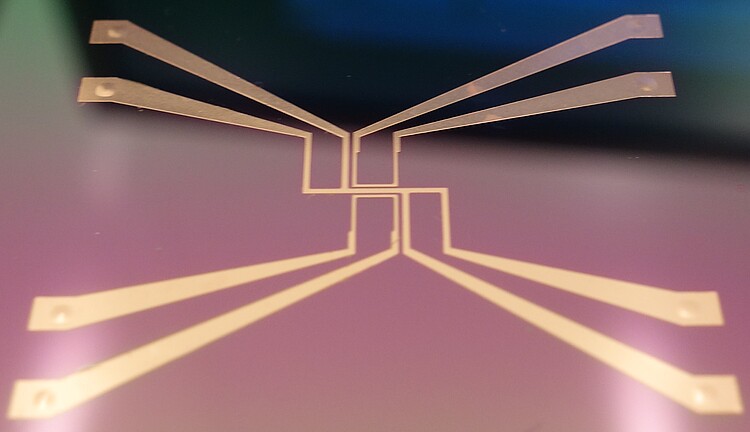Compact atom chip technology for the use in zero-gravity (KACTUS)

| E-Mail: | kassner@impt.uni-hannover.de |
| Year: | 2017 |
| Date: | 09-01-17 |
| Funding: | Deutsches Zentrum für Luft- und Raumfahrt (DLR) |
| Duration: | 2016 - 2019 |
| Is Finished: | yes |
The goal of the KACTUS project is to further miniaturize and further develop scientific instruments for the generation of Bose-Einstein condensates, a macroscopic quantum object in which the majority of the particles are in the same quantum mechanical state. The particles all have the same wave function and thus form the basis for atom interferometry, in which the wave properties of atoms are analyzed, for example to determine the gravitational constant.
In concrete terms, this project aims to improve the structure of the so-called atomic chips, which are planar conductor structures that can be used alone or in combination with coil pairs to create magnetic field configurations in which neutral atoms can be captured. Compared to superstructures based solely on coil pairs, atomic chip devices offer some advantages that are particularly interesting for experiments in zero-gravity. For example, the size of the systems, their mass, and their power consumption are significantly smaller. It is also possible to produce Bose-Einstein condensates more quickly. However, the atom chips must be integrated in ultra-high vacuum chambers (10-7 to 10-12 mbar) and therefore have to have correspondingly low outgassing rates.
Previous techniques only meet this requirement with great restrictions. This results, for example, in a reduction in the life span of the Bose-Einstein condensates. Within the scope of this project, these disadvantages are to be addressed and at the same time, the advantages are to be extended. Various starting points for improvement include the development of atom chips with hermetic current feedthroughs, which can save the electrical feedthroughs previously used. The simultaneous use of adhesive-free production methods can significantly reduce the outgassing of atomic chips and thus significantly increase the life span and particle numbers of ultra-cold atomic ensembles near the chip. In addition, the new materials will make it possible to achieve chip surfaces with better optical qualities than previously achieved.




















